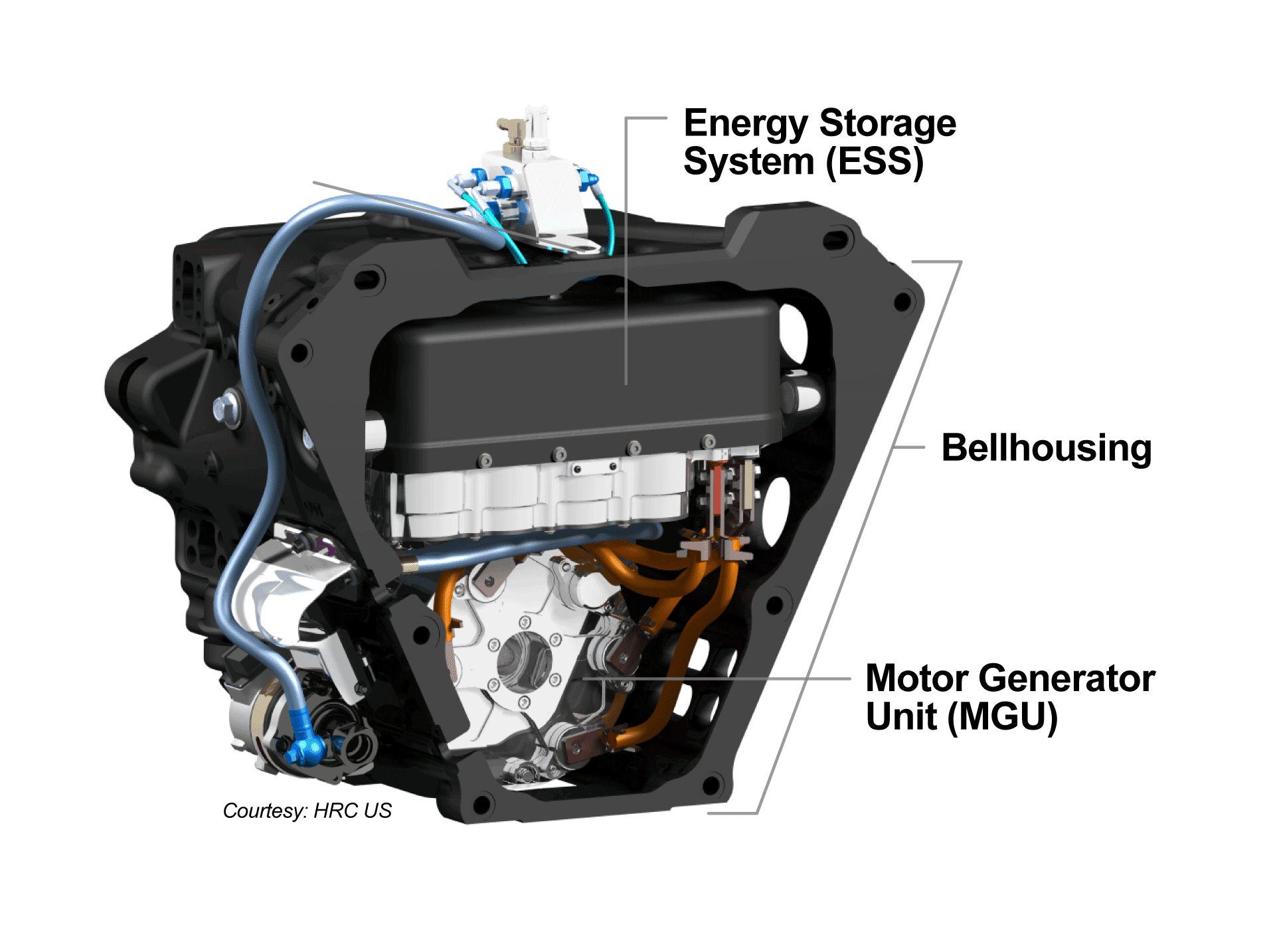
After five years of delays and setbacks, the IndyCar Series will make the transition to hybridization at the July 5-7 race weekend at the Mid-Ohio Sports Car Course.
First announced during the Month of May in 2019, IndyCar first invited manufacturers to tender contracts in advance of a 2022 rollout. It also announced that Honda and Chevrolet would introduce new engines, increasing capacity from 2.2-litres to 2.4.
Ultimately, both manufacturers opted to retain the preexisting platform with Energy Recovery Systems (ERS) placed in new magnesium bellhousings. For what it’s worth, the 2.4L Honda engine went on to form the basis of the Acura ARX-06 LMDh that competes in the IMSA WeatherTech SportsCar Championship.
Hybridization was delated for several factors from COVID early in its development to supply chain issues that have persisted years after its wake. Even the most recently delay, following 15,000 miles of testing over the winter, was due to giving suppliers time to ensure the system is safe and reliable.
Overall, IndyCar says 23,518 miles were completed among 28 drivers since testing began on August 16, 2023.

The IndyCar hybrid platform is different than others used in other motorsport disciplines, those that use batteries to store energy generated by braking and engine braking, which can then be used by drivers in the form of horsepower boosts.
That’s called regen.
IndyCar regen will use an ultracapacitor rather than batteries, which doesn’t store as much energy, but does offer short and powerful busts of energy when can be useful from a speed differential standpoint in a discipline that features as much parity as IndyCar.
The ERS is comprised of a low voltage (48V) Motor Generator Unit (MGU) and the Energy Storage System (ESS) made up of 20 ultracapacitors.
Dering regen, the MGU build the energy and the ESS stores it.
The MGU, which is similar to those used in Formula 1 and IMSA, also has the ability to increase overall horsepower, by around 100, should IndyCar elect to tap into it. The current platform currently makes around 700 horsepower.
As it is, regen will provide a 60 horsepower boost and that’s in addition to the 60 horsepower boost that the overtake assist, or push-to-pass system, also provides. In totality, that’s 120 horsepower if both options are deployed.
From the IndyCar press release:
“Used in combination on road and street circuits, the added boost will provide an additional 120 horsepower for a total of 800hp+ for the first time in two decades. Additional horsepower is expected in the coming years as hybrid unit development evolves.”
How will the system work on high speed ovals, which don’t require as much braking, you might ask?
IndyCar has implemented a regen paddle on the back of the steering wheel to pull with their fingertips to engage the MGU and charge the ESS while racing at speed. While drafting, a light triggering of the MGU replicates lifting off the throttle in the slipstream, therefore saving energy that can be deployed in the same manner as road courses.
On road courses, the push-to-pass system will still be governed by a 150-to-200 second range, in which drivers can choose to use all of it before the end of the race. But for the ERS deployment, IndyCar will have a per-lap maximum based on the length of each track.
All in all, it gives drivers two different options in the pursuit of overtaking and defending positions on the track.
“The strength of this uncharted partnership between Chevrolet and Honda has pushed this innovative project to the grid in 2024,” IndyCar President Jay Frye said. “The IndyCar specific hybrid power unit will bring a new and exciting element to the NTT IndyCar Series with additional energy and overtake options.”
Another benefit of the system is that the hybrid motor can be restarted by the driver. With the platform, a manual starter rod needs to be inserted into the rear end to fire the car but now the hybrid motor will act as a restart mechanism.
In other words, qualifying laps will not be ruined by a driver spinning and bringing out a caution needing safety worker to restart their cars. This should also shorten the length of cautions each race too.
Lastly, the manufacturers are excited for a platform that reflects the changes in the greater automotive industry. David Salters, president of Honda Racing Corporation USA (HRC) added:
“Hybrid technology is playing an ever-increasing role in both our racing programs and the production vehicles created by Honda and Acura. More than a quarter of Honda’s total sales in 2023 – nearly 300,000 vehicles – were Honda CR-V and Accord hybrids.
“Introducing electrification to INDYCAR at Mid-Ohio further aligns our racing efforts with Honda’s passenger car production as we operate multiple manufacturing and R&D facilities in central Ohio, employing more than 13,000 associates there.
“This is exciting new technology and, like all things new, has presented challenges to us at HRC as we have stepped in with our competitors to help IndyCar make the hybrid system compact enough, powerful enough, light enough and reliable enough to work within the highly restricted confines of an IndyCar chassis.
“We are proud of our associates’ work to develop the supercapacitor pack and control software for the system. We look forward to hybrid tech adding another dimension to the great racing spectacle and entertaining our great Honda and IndyCar racing fans.”
The power unit is scheduled for a full-field test on Tuesday, June 11 at the Milwaukee Mile in advance of the July debut.
“We cannot wait to see the start of this new era at Mid-Ohio.”

